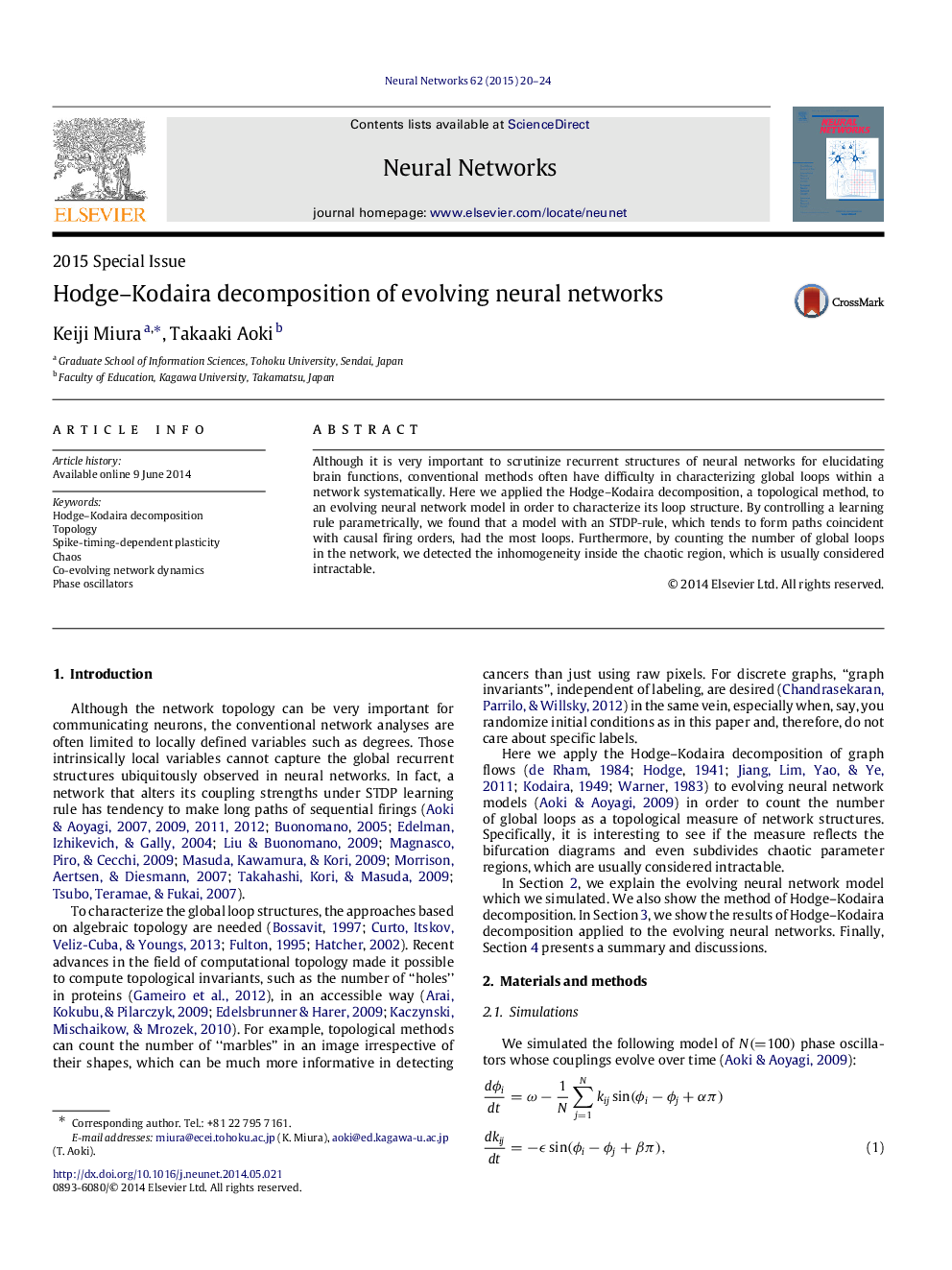| Article ID | Journal | Published Year | Pages | File Type |
|---|---|---|---|---|
| 404157 | Neural Networks | 2015 | 5 Pages |
Abstract
Although it is very important to scrutinize recurrent structures of neural networks for elucidating brain functions, conventional methods often have difficulty in characterizing global loops within a network systematically. Here we applied the Hodge–Kodaira decomposition, a topological method, to an evolving neural network model in order to characterize its loop structure. By controlling a learning rule parametrically, we found that a model with an STDP-rule, which tends to form paths coincident with causal firing orders, had the most loops. Furthermore, by counting the number of global loops in the network, we detected the inhomogeneity inside the chaotic region, which is usually considered intractable.
Related Topics
Physical Sciences and Engineering
Computer Science
Artificial Intelligence
Authors
Keiji Miura, Takaaki Aoki,
